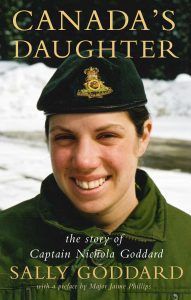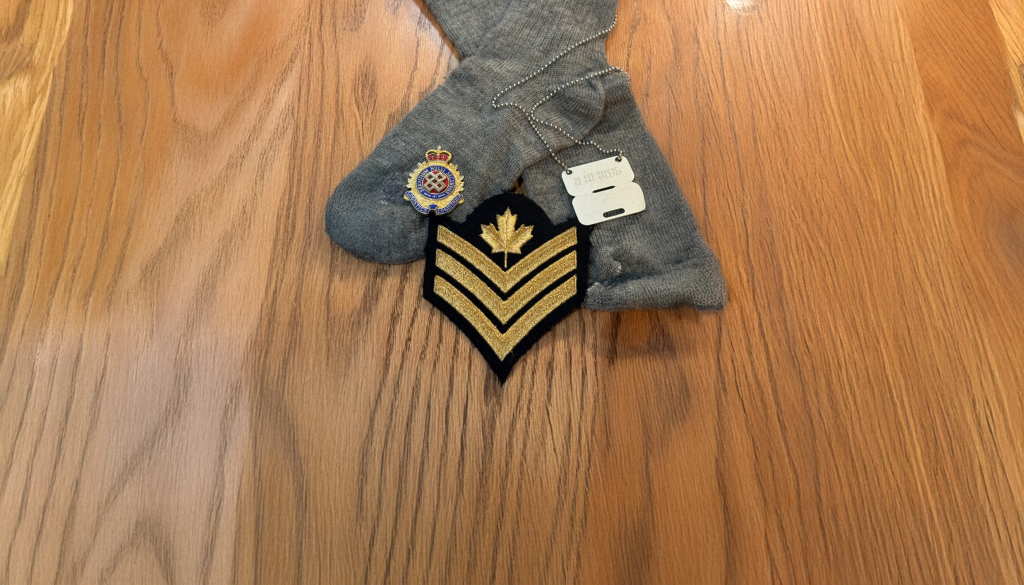- 2024-11-13
- Blog
Canada’s daughter: The story of Captain Nichola Goddard

On May 17, 2006, Captain Nichola Goddard was killed in a firefight in Afghanistan. She was the first Canadian artillery officer since the Korean War to call fire down. While she was not the first Canadian soldier killed in action, she was the first Canadian officer to be killed in the Afghan conflict. She was also the first female Canadian soldier ever killed in combat.
In the years following her death, Canadians have been moved by her life and death to create monuments across Canada in her honour. These range from a middle school in Calgary, to a Coast Guard ship off the coast of British Columbia, to playgrounds in Sault Ste. Marie, ON and Charlottetown, PEI, from a sword at the Royal Military College to a lake in northern Saskatchewan; from a bagpipe lament to the song Highway of Heroes by the Trews, and from quilts to paintings to scholarships to trig markers.

When I began to write her story, I wanted the generations of students who attended the Captain Nichola Goddard School to understand why the school bore her name. The children who go there now were not yet born when she was killed. I think it is important that all Canadians have an understanding of the Afghan conflict and the sacrifices made. Nichola’s is one of them.
As I put together Nichola’s story, I realize that her father and I inadvertently prepared her for Afghanistan. She was born in Papua New Guinea and spent her first four years there, living in remote villages and eating different food than what she would come to know. When we came to Canada in February 1984 we lived in northern Canada for almost 10 years in remote communities and eating “country food.” In Afghanistan some of the villagers were surprised that she would eat their food — we weren’t. Before Nichola joined the military she had gone to eight different schools in seven different communities across five different provinces and one territory.
Nichola had two things that helped her: She never gave up and she was kind. She was a person that had to work for everything — the only things that came easily for her were her ability to laugh and being a big sister.
Nichola was four when we moved to a reserve in northern Saskatchewan. She learned how to fish for grayling in the swift flowing rivers, look for animal tracks in the snow, shoot a small gun and skin a rabbit. But she didn’t learn the skills you probably learned at school such as how to jump rope, play hopscotch, and ride a bike. Her father and I worked hard at teaching her these things when we moved to Saskatoon and she was going into Grade 3. She worked all summer with us on these skills. She didn’t just jump on the bike and begin to ride. Nor, as Tim and I turned the rope, did she learn how to skip quickly. It seemed to take forever. Once school started, she had to learn how to swim and then to figure skate.
There’s a saying that it takes a village to raise a child. It is an African proverb that means that parents can only teach their children so much. The rest of what children learn comes from everyone around them. Her father and I had to learn that we couldn’t solve all of Nichola’s problems and teach her everything she needed to know. Nichola learned there were lots of adults happy to help. Her teachers were more than happy to help at lunchtime and after school. Although her father and I were teachers, we were not expected to help with homework, especially math, as we didn’t do it the same way her teacher did. At one school that had a dental hygienist, Nichola went and talked to her about fixing the gap in her teeth. The hygienist called us and we were embarrassed, but we made an appointment for her to see an orthodontist. In one community, she spent hours talking to the librarian. She babysat and talked to the parents. Once she started cross-country skiing, her coaches helped her. When she went to university, different professors helped. And after she was married, there was a woman who lived next door to her who called herself Nichola’s second mother. She lent her jewelry and gave her fashion advice.
All kinds of people were part of Nichola’s life as she grew up. She didn’t become who she was just because of her dad and me. It took a village.
— Sally Goddard

Are you a Veteran or Family member with a story to tell? Get in touch with us and you may be featured on this blog!

